Audi 2012 Annual Report Download - page 183
Download and view the complete annual report
Please find page 183 of the 2012 Audi annual report below. You can navigate through the pages in the report by either clicking on the pages listed below, or by using the keyword search tool below to find specific information within the annual report.-
 1
1 -
 2
2 -
 3
3 -
 4
4 -
 5
5 -
 6
6 -
 7
7 -
 8
8 -
 9
9 -
 10
10 -
 11
11 -
 12
12 -
 13
13 -
 14
14 -
 15
15 -
 16
16 -
 17
17 -
 18
18 -
 19
19 -
 20
20 -
 21
21 -
 22
22 -
 23
23 -
 24
24 -
 25
25 -
 26
26 -
 27
27 -
 28
28 -
 29
29 -
 30
30 -
 31
31 -
 32
32 -
 33
33 -
 34
34 -
 35
35 -
 36
36 -
 37
37 -
 38
38 -
 39
39 -
 40
40 -
 41
41 -
 42
42 -
 43
43 -
 44
44 -
 45
45 -
 46
46 -
 47
47 -
 48
48 -
 49
49 -
 50
50 -
 51
51 -
 52
52 -
 53
53 -
 54
54 -
 55
55 -
 56
56 -
 57
57 -
 58
58 -
 59
59 -
 60
60 -
 61
61 -
 62
62 -
 63
63 -
 64
64 -
 65
65 -
 66
66 -
 67
67 -
 68
68 -
 69
69 -
 70
70 -
 71
71 -
 72
72 -
 73
73 -
 74
74 -
 75
75 -
 76
76 -
 77
77 -
 78
78 -
 79
79 -
 80
80 -
 81
81 -
 82
82 -
 83
83 -
 84
84 -
 85
85 -
 86
86 -
 87
87 -
 88
88 -
 89
89 -
 90
90 -
 91
91 -
 92
92 -
 93
93 -
 94
94 -
 95
95 -
 96
96 -
 97
97 -
 98
98 -
 99
99 -
 100
100 -
 101
101 -
 102
102 -
 103
103 -
 104
104 -
 105
105 -
 106
106 -
 107
107 -
 108
108 -
 109
109 -
 110
110 -
 111
111 -
 112
112 -
 113
113 -
 114
114 -
 115
115 -
 116
116 -
 117
117 -
 118
118 -
 119
119 -
 120
120 -
 121
121 -
 122
122 -
 123
123 -
 124
124 -
 125
125 -
 126
126 -
 127
127 -
 128
128 -
 129
129 -
 130
130 -
 131
131 -
 132
132 -
 133
133 -
 134
134 -
 135
135 -
 136
136 -
 137
137 -
 138
138 -
 139
139 -
 140
140 -
 141
141 -
 142
142 -
 143
143 -
 144
144 -
 145
145 -
 146
146 -
 147
147 -
 148
148 -
 149
149 -
 150
150 -
 151
151 -
 152
152 -
 153
153 -
 154
154 -
 155
155 -
 156
156 -
 157
157 -
 158
158 -
 159
159 -
 160
160 -
 161
161 -
 162
162 -
 163
163 -
 164
164 -
 165
165 -
 166
166 -
 167
167 -
 168
168 -
 169
169 -
 170
170 -
 171
171 -
 172
172 -
 173
173 -
 174
174 -
 175
175 -
 176
176 -
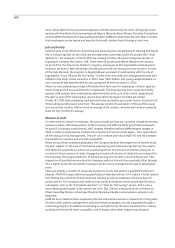 177
177 -
 178
178 -
 179
179 -
 180
180 -
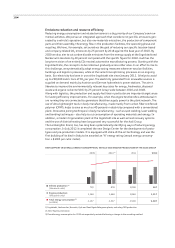 181
181 -
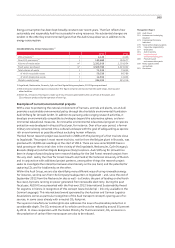 182
182 -
 183
183 -
 184
184 -
 185
185 -
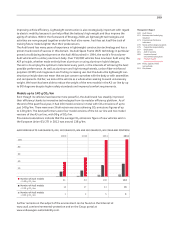 186
186 -
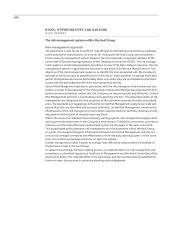 187
187 -
 188
188 -
 189
189 -
 190
190 -
 191
191 -
 192
192 -
 193
193 -
 194
194 -
 195
195 -
 196
196 -
 197
197 -
 198
198 -
 199
199 -
 200
200 -
 201
201 -
 202
202 -
 203
203 -
 204
204 -
 205
205 -
 206
206 -
 207
207 -
 208
208 -
 209
209 -
 210
210 -
 211
211 -
 212
212 -
 213
213 -
 214
214 -
 215
215 -
 216
216 -
 217
217 -
 218
218 -
 219
219 -
 220
220 -
 221
221 -
 222
222 -
 223
223 -
 224
224 -
 225
225 -
 226
226 -
 227
227 -
 228
228 -
 229
229 -
 230
230 -
 231
231 -
 232
232 -
 233
233 -
 234
234 -
 235
235 -
 236
236 -
 237
237 -
 238
238 -
 239
239 -
 240
240 -
 241
241 -
 242
242 -
 243
243 -
 244
244 -
 245
245 -
 246
246 -
 247
247 -
 248
248 -
 249
249 -
 250
250 -
 251
251 -
 252
252 -
 253
253 -
 254
254 -
 255
255 -
 256
256 -
 257
257 -
 258
258 -
 259
259 -
 260
260 -
 261
261 -
 262
262 -
 263
263 -
 264
264 -
 265
265 -
 266
266 -
 267
267 -
 268
268 -
 269
269 -
 270
270 -
 271
271 -
 272
272 -
 273
273 -
 274
274 -
 275
275 -
 276
276 -
 277
277 -
 278
278 -
 279
279 -
 280
280 -
 281
281 -
 282
282 -
 283
283 -
 284
284 -
 285
285
 |
 |

186
CURRENT ENVIRONMENTAL PROJECTS
Emissions trading
In 2005, the European Union took a leading role in climate protection with the introduction of
CO2 emissions trading. The second trading period in which the Ingolstadt, Neckarsulm and Brus-
sels (Belgium) manufacturing plants participated ended with the 2012 reporting year. The third
trading period, in which the Győr (Hungary) production location is now also participating, runs
from 2013 for a total of eight years, ending in 2020. To minimize the risk of a shortfall in cover
and the potential costs that the Audi Group could consequently incur, instead of selling certifi-
cates that were not needed in the past trading period it has carried them forward to the third
trading period.
PRODUCT-BASED ENVIRONMENTAL ASPECTS
Future mobility
Against a backdrop of heightened environmental awareness among consumers and the regulatory
framework for CO2 limits currently being discussed on an international scale in various forms,
reducing fuel consumption is crucially important for Audi.
Over many years the Audi brand has steadily helped to define efficiency standards in automotive
manufacturing through an extensive range of innovations. Pioneering engine concepts such as
TDI, FSI and TFSI and the reversal of the weight spiral are impressive illustrations of how it has
set about this challenge. To continue delivering “Vorsprung durch Technik” and play a decisive
role in defining the future shape of mobility, it is vitally important for our Company to reconcile
fuel efficiency with comfort, sportiness and driving enjoyment. Its basic approach is one of a
diversified concept that offers customers various drive technologies to serve varying needs,
calling upon a wide range of technologies and energy sources.
For the time being, the technical principle of the combustion engine will remain the dominant
drive system. The Audi brand therefore continues to work on optimizing its successful range of
TDI, FSI and TFSI engines. It aims to reduce fuel consumption and CO2 emissions even further
through the systematic use of advanced technologies from its modular efficiency platform.
Electrified drive concepts are a further focal area within our technology matrix. Hybrid technology
provides a very important bridge to plug-in hybrid technology and purely electric driving in that
respect. Related product events in the past fiscal year included the market introductions of the
Audi A6 hybrid and A8 hybrid models. Audi e-tron, which spans all development activities involving
electric mobility, covers plug-in hybrids and vehicles with range extender as well as all-electric
drive versions. Early last year, the Company presented the Audi A6 L e-tron concept in Beijing at
Auto China 2012 – the first e-tron concept in the full-size category. It has a powerful plug-in
hybrid that can travel for up to 80 kilometers purely in the electric mode. The Audi crosslane
coupé concept car that was unveiled at the Paris Motor Show in 2012 also showcased an espe-
cially innovative and efficient dual-mode hybrid drive (cf. “Audi e-tron” under “Research and
development,” p. 156).
Species and landscape conservation Rail freight on green power Solar power Wind power
